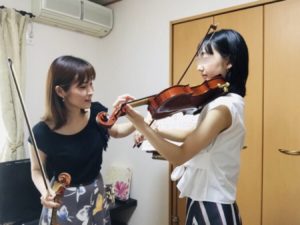We must brag on our staff for a minute. Our violin teachers absolutely rock. They are essentially the most qualified and passionate violin teachers in Birmingham. The proof is within the performances we hear from our college students at recitals and concerts and it’s on the faces of our students after they stroll out of lessons each week.
First place covers the notes at the top of the violin. This is the section closest to the pegbox. Staying on this place means you won’t be transferring your hand round, just your fingers. You’ll be in first place for some time as a newbie and, as you’ll see within the chart below, loads of notes lie inside it.
The violin is historically performed by putting it on the left shoulder, balancing the neck (and fingering) utilizing the left hand, and bowing with the suitable arm. Since the bowing action is extraordinarily vital to controlling the sounds, people who are right-handed are able to use their dominant arm to perform this task. Fingering is minor バイオリンレッスン 東京 when compared with the motion of the bow, relative to the music you may produce. So naturally, having the bow in your right hand (if you’re right-handed) makes it easier when learning to play the violin. That’s merely the best way the violin is made; and for a few years, there wasn’t some other possibility.
Most of the instruments required for violin making are the identical as these used for many varieties of hand woodworking and carving: planes, chisels, gouges, knives, saws, and scrapers. In addition, just a few specialized tools are wanted. These embrace a thickness caliper, small curved bottom “thumb” planes, purfling groove cutter, peg gap reamer and matching peg shaver, bending iron, clamps of assorted varieties, and patterns. Many violin makers take delight in making some of their very own instruments. Certainly, one of many keys to success as a violin maker is growing the skills associated with making, utilizing, and maintaining sharp edged instruments.
